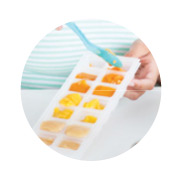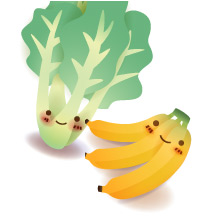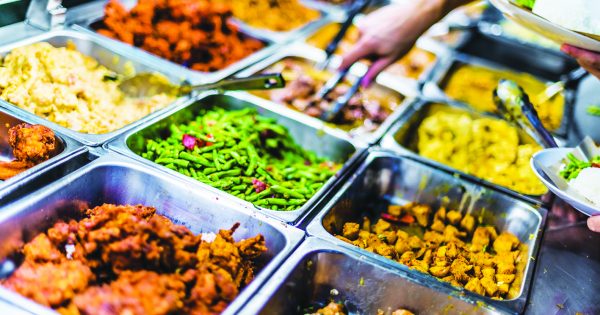Complementary feeding should start once your little one is six months old. This is the perfect time for you to inculcate a healthy eating habit from a young age as you will have full control of the ingredients that go into his meals. Here, we highlight some simple tips you can quickly put to use in order to dish out some healthy baby food without too much fuss.
Hygiene is Crucial
Always ensure that your kitchen utensils, the preparation and cooking area, and of course, the food itself is clean. As a general guide, adopt the following habits:
- Wash your hands before and after preparing or cooking.
- Separate raw ingredients from cooked ones. Never let raw foods come in contact with cooked foods.
- Never leave foods at room temperature for more than two hours.
- When reheating foods that have been frozen, ensure that it is piping hot throughout (it should be steaming). Cool it sufficiently before feeding your little one.
Getting Started
Once you have decided what you will make for your little one, you will need to prepare the ingredients beforehand. You can make them in bulk to last for a week; give a small sample to him first to ensure that he likes it before you whip up more. Once you make his week’s supply of complementary food, you can freeze it for convenience. These can be kept in the freezer for up to a week (do not thaw and re-freeze to prevent food spoilage).
Tip!
Don’t have a blender? Just use an old-fashioned fork to mash the veggie/fruits! If it is too dry, try adding expressed breast milk instead of water for a more flavourful meal!
For Easy Portions…
Use an ice-cube tray (pop it into a freezer bag for hygiene) to freeze the food into tiny ready-to-serve portions for easy dispensing. This ensures that you will not need to thaw the entire batch for each meal.

As his appetite gradually increases, you may need to increase his portion size; use a cupcake tin lined with cling-wrap. This allows you to individually wrap a precise amount (you can measure as you fill it) which you can then thaw separately.
Preparing his Fruits/Veggies
Suitable fruits include pears, pumpkin, mango, bananas, papayas, and watermelon. Always wash and remove the skin, seeds, pits, and/or cores.

When you first start feeding him vegetables, start with leafy veggies first as your little one may reject them if you start off with more flavourful veggies like peas, sweet potatoes, or carrots. Vegetables should be cut into smaller pieces or cubed.
You should then steam, boil (use just enough water to cover and reserve the water to thin your puree), microwave, or bake them until they are soft. To make a puree, aim for a smooth, and yogurt-like consistency (the puree should be firm enough to form peaks).
Making Homemade Stock
This makes an excellent base for stews, porridges, cereals, and soups. Start by washing the vegetables thoroughly, then cutting them into smaller pieces. Place them in a pot and use enough water to cover them, and then boil until vegetables are tender before simmering for half an hour. You can opt to use a single type of vegetable, or combine a few types (if you already know that he is not allergic to any of them).
If at first you don’t succeed…
Your little one may not eat something new right away; you may need to try feeding him as many as 15 times before he will accept some foods, so don’t give up too quickly!
A More Delicious Porridge
As an alternative, you can blend/mash your stock together with some porridge for a more flavoursome meal. If it is too watery, just add some cereal to thicken it.

Evolving Needs
It is critical that you provide your little one with the opportunity to experience different foods. This would entail preparing and feeding him with foods that come in different colours, textures, flavours, and shapes that are suitable to his developmental stage, e.g. only mashed/pureed foods to be served at six months of age.
Don’t Forget!
Here are some other key points to remember when starting your child on complementary feeding:
- Always start with rice (a simple porridge/gruel will do).
- When introducing vegetables to him, start with leafy greens as these tend to taste blander; if you start with naturally flavourful vegetables such as carrots, he may completely refuse to eat other greens.
- Other vegetables such as peas, sweet potatoes, and carrots need to be steamed, broiled, or blanched until it is soft enough. You may then mash/puree it to achieve the right consistency for your six-month-old. As he grows older, you can slowly adjust them to suit his developmental stage.
- For fruits, get him started with soft fruits such as bananas, papayas, mangos, or watermelon. You can mash/puree them to make it easier for him to eat them. Harder fruits such as apples will need to be lightly cooked (by steaming/boiling) to soften them beforehand.
- Making a fruit juice? Use a 1:1 ratio of freshly squeezed fruit juice and clean drinking water and DO NOT add any sugar.
- Beware of spicy ingredients! Make sure you do not feed him chillies or any other foods with heat as he may not be able to endure it.
- Don’t try to save baby food by keeping it for a later feeding if you have thawed and served it to your little one earlier – you don’t want to feed him spoiled food!

Beware of Food Allergies!
Feed the same type of food for a week (or a minimum of three days) before introducing a new food. This allows you to easily identify any food allergies your baby may have. If you see him develop any kind of adverse reaction to a new food, stop feeding him at once.
An educational collaboration with Nutrition Society of Malaysia.






Comments